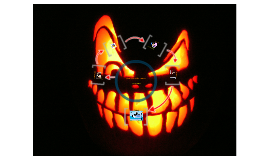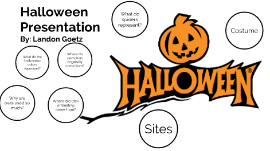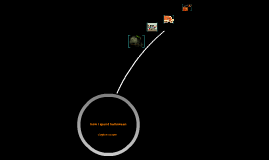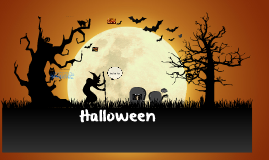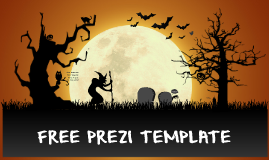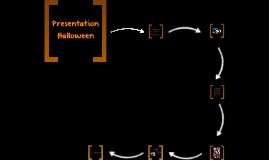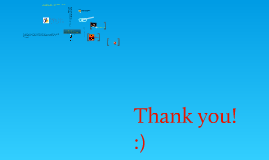Halloween Presentation
Transcript: During the Middle Ages (about 600 years ago), the Roman Catholic Church at that time, decided to make the change-over from pagan religion to Christianity a bit easier, and therefore allowed the new converts to maintain some of their pagan feasts. It was agreed, however, that from now on they would be celebrated as "Christian" feats. So instead of praying to thwir heathen gods, they would now pray to, and remember the deaths of saints. For this reason the church decided to call November 1 the "Day of All Saints," and the mass to be celebrated on that day "Alhallowmass." In consequence of this, the evening prior to this day was named, "All Hallowed Evening" which subsequently was abbreviated as "Halloween." In spite of this effort to make October 31 a "holy evening," all the old customs continued to be practiced, and made this evening anything BUT a holy evening! Today, Halloween is once again being celebrated as an adult holiday or masquerade, like Mardi Gras. Men and women in every disguise imaginable are now participating in parades. Many parents decorate their homes and yards, dress in costume, hand out candy at their door or go with their children as they collect candy. And despite its origins, today it has nothing to do with evil, devil worship, satanic forces, etc. It's just good clean fun! Meanwhile, back in the new world, the settlers were all Protestant and Halloween was technically a Catholic holiday. The original colonists in this country found ANY celebration immoral, especially a Catholic one. In fact, celebrating Christmas in the Massachusetts colony was once illegal, punishable by banishment or death. After the American Revolution, Halloween still never really caught on in America. Most of the country was farmland, and the people too far spread out to share different celebrations from Europe. Any chance to get together was looked forward to - barn raisings, quilting bees, taffy pulls. Eventually, a fall holiday called the Autumn Play Party developed. People would gather and tell ghost stories, dance and sing and feast and light bonfires. The children would stage a school pageant where they paraded in costumes. Trick-or-Treating The Autumn Play Parties lasted until the Industrial revolution. After that, the majority of Americans lived in cities and had no need for such get togethers. By the end of the Civil War, only Episcopalians and Catholics celebrated All Saints' Day and Halloween, and the two religions combined made up less than 5% of the population. Concerned about letting a part of their heritage fade away, the the two religions began an aggressive campaign to put those two holidays on all public calendars. In the late 1800's there was a move in America to mold Halloween into a holiday more about community and neighborhood "get-togethers," than about the supernatural. .At the turn of the century, Halloween parties for both children and adults became the most common way to celebrate. The first year All Saints' Day and Halloween showed up on the calendars, the newspapers and magazines made a big deal about it. Suddenly, everyone knew about Halloween and began celebrating it by lighting bonfires and having masquerade parties. The first official citywide Halloween celebration in the United States, occurred in Anoka, Minn., in 1921. In the 1920's and 30's Halloween became a secular but community centered holiday which was celebrated with parades and town wide parties. By the 1950's vandalism had to be brought under control and by this time Halloween was more of a child's celebration. Treats were handed out in order to prevent tricks like lawn rolling at each home. Those traditions have made Halloween the country's second largest commercial holiday to the tune of more than $2 billion spent on candy each year. n ancient Ireland, one story says that on Samhain the disembodied spirits of all those who had died throughout the preceding year would come back in search of living bodies to possess for the next year. It was believed to be their only hope for the afterlife. The Celts believed all laws of space and time were suspended during this time, allowing the spirit world to intermingle with the living. Naturally, the still-living did not want to be possessed. So on the night of October 31, villagers would extinguish the fires in their homes, to make them cold and undesirable. They would then dress up in all manner of ghoulish outfits (similar to today's Halloween Costumes, and noisily parade around the neighborhood, being as destructive as possible in order to frighten away spirits looking for bodies to possess. All Souls' Day Halloween http://wilstar.com/holidays/hallown.htm The many customs we have today in relation to Halloween have their origins in the religious practices of the Romans and the Druids, therefore dating back many centuries. The Romans worshiped various gods and on October 31, a special feast was held in honor of Pomona, goddess of the fruit trees. Later, the Druids, an ancient







